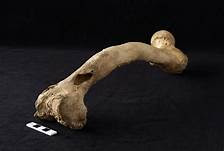Can an infection in the bones cause toothache?
Toothache is a common symptom of sinusitis. This can be due to bone pressure and drainage from bone infections. The pain is usually felt in the upper hind teeth near the sinuses.
Bone anatomy:
The sinuses are the four pairs of air found in the facial bones behind your eyes, forehead, and cheekbones. They warm, shake and filter the air in your nasal cavity. Sinuses also produce mucus, which drains into the nasal cavity and clears the nose. When these air-filled areas are blocked by fluid, infection is possible.
Crowding and pressure with bone infections can cause discomfort or pain in your teeth. This is because the roots of your teeth and jaw bones are close to your bones. Sometimes, this is what is called referred pain, the pain also spreads to your lower teeth.
inus vs. regular toothache:
Many of the symptoms of a regular toothache are similar to a toothache. However, bone toothache is mainly felt in the upper molars, affecting many teeth instead of just one. If you have a toothache, and it is accompanied by some of the symptoms listed below, it is likely that your toothache is due to a bone infection. You may feel a little under the weather (low in energy) or have a fever.
Toothache due to dental problems is likely to be the only source of pain, and it can be more intense and concentrated. Bone toothache is aggravated by a certain type of movement. Jumping or bending up can make the pain worse. This is because as soon as you move, the pressure of the bones changes and you feel more in your teeth. The pain may subside when you are sitting or lying down.
"Other symptoms"
Most sinusitis regularly begins as a viral cold and turns into a useless bacterial infection. Other underlying causes include allergies, bacterial or fungal infections, and changes in temperature or air pressure. Chemical itching, asthma and low immunity also increase the risk of sinusitis.
Often, the symptoms of a bone infection are similar to those of a cold and nasal allergy. You may have a runny nose, runny or stuffy nose, or a cough. Inflammation and swelling can cause blockage and pressure in the sinuses, causing discomfort in the face.
Additional symptoms of a bone infection include:
> Apply pressure or tenderness around your nose, eyes or forehead
> Thick, colorful mucus
> Bad tasting nasal drip
> Heliatosis
> Completion or pain in the ear
> Fever
> Fatigue
> Fatigue
> Loss of smell and taste
> Swelling in the throat
> Hard sound
> Home Remedies
There are many options for treating bone infections. It is important that you treat the symptoms as soon as possible. If you do not see results, you can start with some of these home remedies and move on to traditional remedies. Here are some options.
Stay hydrated:
Drinking plenty of water is key to relieving bone congestion. Make sure you are drinking plenty of water and drinking plenty of fluids. It helps to thin mucus and reduce the pressure and obstruction in your bones. Hot liquids such as soups and teas can be especially soothing.
Steam:
Breathing in warm, moist air can open your nasal passages and relieve bone pressure. Put only boiling water in a large bowl. Place your face on the water, cover your head with a towel, and take a deep breath for a few minutes. You can also take a hot steam shower twice a day.
Sinus flash:
Washing your sinuses with a saline solution can help moisturize your sinuses while clearing out allergens and discharges.
You can buy a premixed solution. Use a nasal spray, neti vessel or nasal irrigation system to clean your bones.
Limit Dangerous Nasal Spray:
Although decongestant nasal sprays can be a good option for short-term treatment of congestion, overuse can reduce the benefits. Instead of avoiding it, it can cause the sheep to die and over time, you can develop tolerance.





